
The Marshall University Sustainability Gardens serve as a hands-on learning space dedicated to promoting environmental responsibility, food security, and sustainable practices. These gardens provide students, faculty, and staff with opportunities to engage in organic gardening, urban agriculture, and ecological stewardship while enhancing the campus landscape.
Upcoming Events:
Market Days – Take advantage of our Market Days to enjoy fresh produce from our gardens. When in season, our booth is available on Wednesdays from 11 a.m. until 2 p.m. in the Memorial Student Center. Market Days are dependent upon available produce and usually take place from April through October.
Earth Week – Our Power, Our Planet: April 14-18, 2025.
Join us for a week of experiences where students, staff, faculty, and community members can dive into workshops, alternative transportation challenges, environmental service projects, and local food system connections.
Our annual Earth Day Celebration will take place at the Memorial Student Center on Wednesday, April 16 from 10 a.m. until 2 p.m.
✨ Table at Earth Day – Sign up here!
✨ Host an event – Fill out this form!
✨ Become a sponsor – Contact bemarshallgreen@marshall.edu!
A Green Initiative for the Herd
Fruits, vegetables, and herbs are cultivated using eco-friendly and organic methods.
The gardens serve as a living classroom for students in agriculture, biology, and environmental science courses.
The gardens support pollinators and contribute to a healthier campus ecosystem.
Volunteers and campus organizations can participate in planting, maintaining, and harvesting crops.
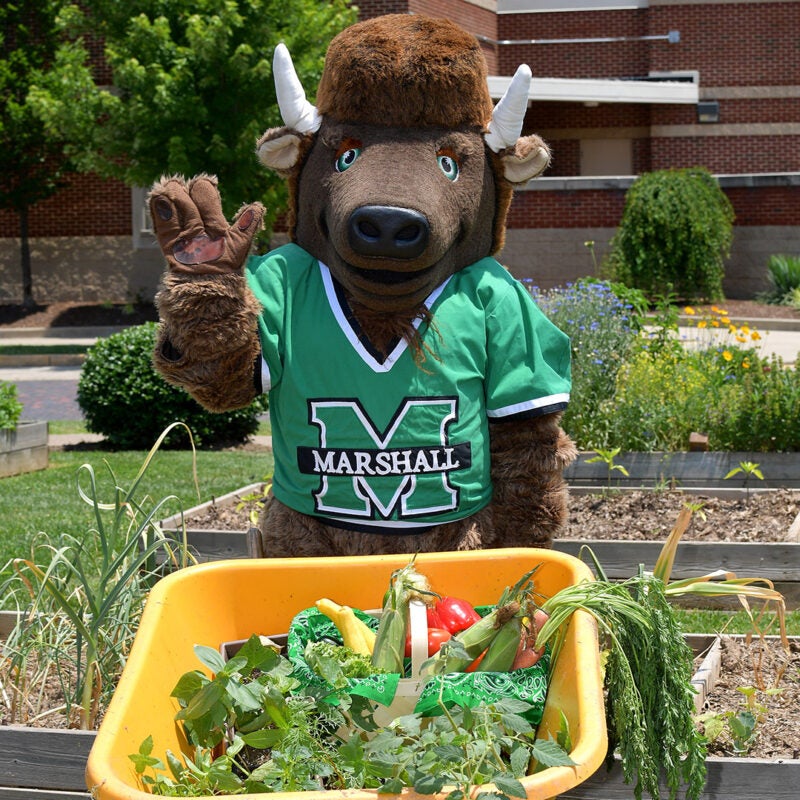
Student Garden
The Marshall University Student Garden was established with a vision by Steve Hensley, former Dean of Student Affairs, to create a dedicated space where students could plant, relax, and learn about sustainable food practices. This initiative provides hands-on opportunities for students to connect with their food sources while fostering a sense of community and environmental responsibility.
In its second year, the garden was maintained by Rick Abel, a Marshall University instructor, and the Parks and Recreation Organization of Students (PROS), who played a key role in tending the raised beds. By fall 2013, the MU Sustainability Department hired Lead Gardener Angela Kargul to oversee garden operations and coordinate involvement with students, faculty, staff, and campus organizations.
Garden Location
The Student Garden is located behind the Career Services building at 1687 5th Avenue.
How It Works
- Plant Donations & Greenhouse Support: Plants are grown in the Marshall Greenhouse or donated by supporters.
- Fresh Produce Distribution: The garden’s harvest is shared during weekly Market Days, providing fresh produce to university students, faculty, staff, and local residents—everyone is welcome!
- Volunteer Opportunities: Students and community members are encouraged to get involved in planting, maintaining, and harvesting.
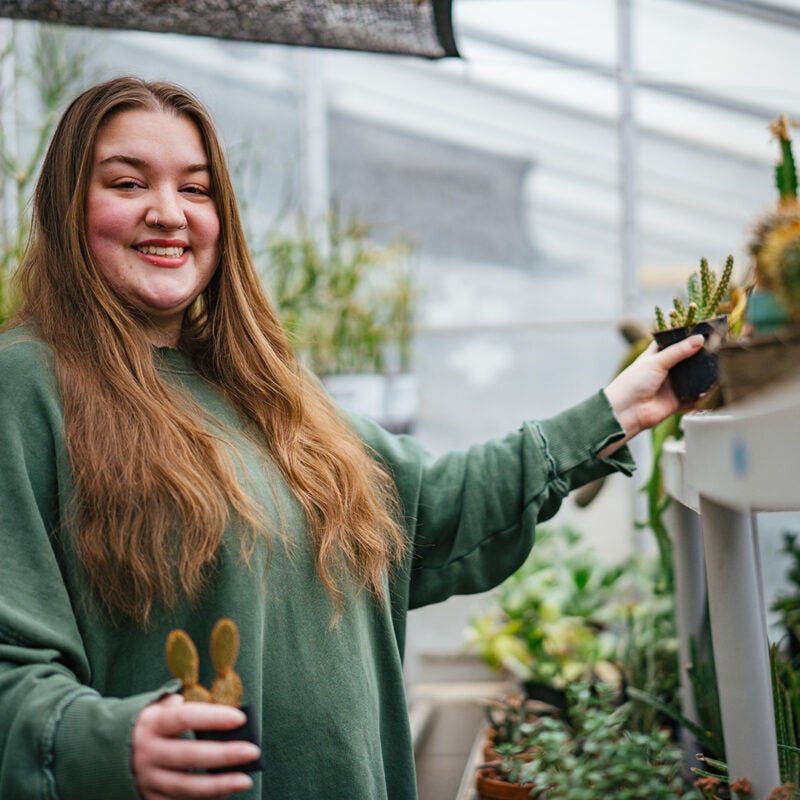
Marshall University Greenhouse
The Marshall University Greenhouse has become a thriving hub for research, education, and sustainability initiatives. In recent years, its use has expanded, with multiple departments and student organizations contributing to campus beautification and environmental projects.
Who Uses the Greenhouse?
The greenhouse supports a variety of programs and groups, including:
- Housing & Residence Life – Growing plants to enhance campus landscapes.
- Sustainability Department – Propagating plants for Sustainability Gardens and outreach efforts.
- Biological Sciences & IST Departments – Conducting research and experiments.
- Natural Resource & Recreation Management (NRRM) – Providing hands-on learning experiences.
- West Virginia State University’s SCRATCH Program – Supporting children’s education and urban agriculture.
- Student Organizations – Groups like PROS (Parks & Recreation Organization of Students) and Creek Geeks use the space for environmental initiatives.
A Space for Learning & Innovation
The greenhouse provides faculty members with dedicated rooms for propagation and experimentation, while student-led projects and sustainability efforts continue to grow. With its expanding role on campus, the Marshall University Greenhouse remains a vital resource for education, conservation, and community engagement.
Garden Location
Marshall University’s Greenhouse is located behind the Science Building, 1715 3rd Ave.
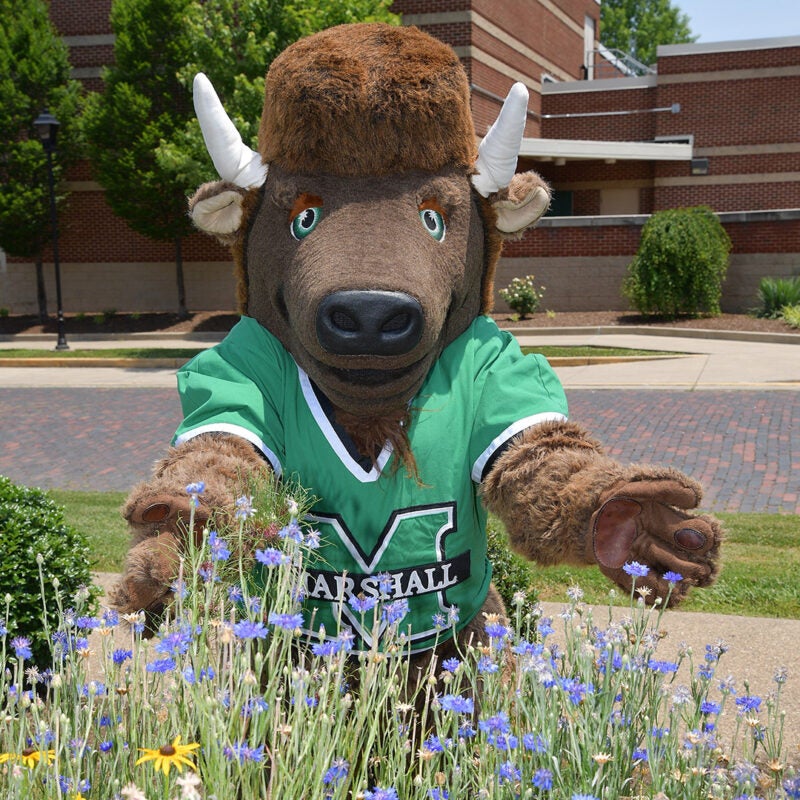
Very Important Pollinator (VIP) Garden
The Very Important Pollinator (VIP) Garden at Marshall University is a dedicated habitat for vital pollinators such as bees, butterflies, moths, birds, beetles, and other beneficial insects. Established in Spring 2014 by the MU Sustainability Department, this garden supports native plant species that thrive in our region’s climate and soil while providing essential food and shelter for pollinators.
Why Pollinators Matter
Pollinators play a crucial role in maintaining healthy ecosystems. Nearly one-third of our food crops rely on their services, but pollinators face serious threats, including habitat loss, pollution, pesticides, disease, and climate change. By creating and maintaining this garden, Marshall University helps combat these challenges while promoting biodiversity on campus.
Garden Location
The VIP Garden is located behind the Career Services building at 1687 5th Avenue., nestled between the university’s vegetable beds.
Native Plant Species in the VIP Garden
The garden features a variety of native and pollinator-friendly plants, including:
- Lanceleaf Coreopsis (Coreopsis lanceolata)
- Bachelor’s Button (Centaurea cyanus)
- Common Yarrow (Achillea millefolium)
- Lavender Hyssop (Agastache foeniculum)
- Cosmos
- Clover (Trifolium L.)
Special Thanks
We extend our gratitude to the Guyan Conservation District for their generous seed donations, which have helped this garden flourish.
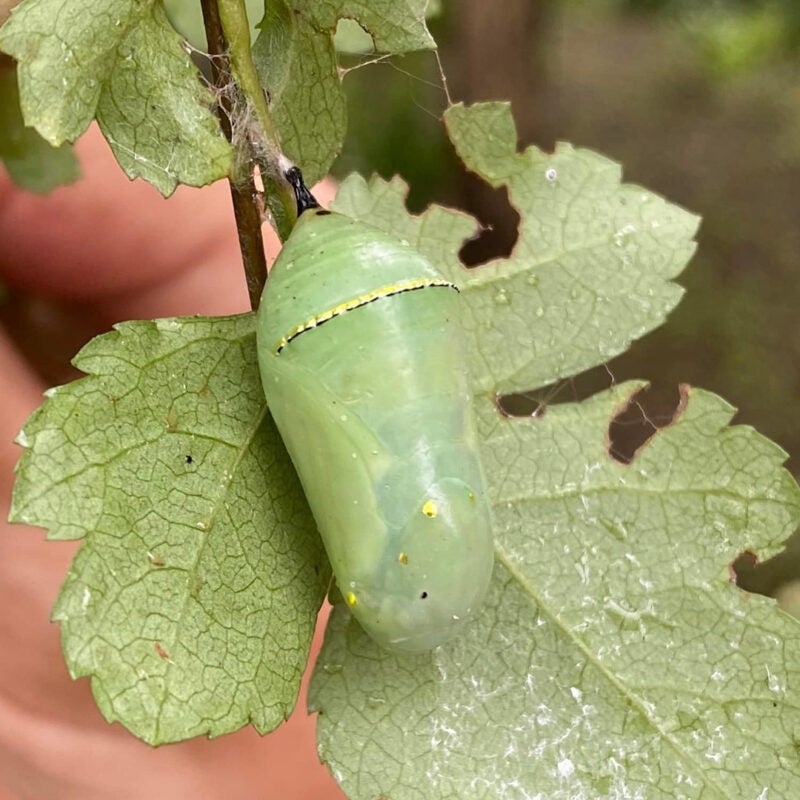
Butterfly Oasis Garden
The Butterfly Oasis was established in June 2014 by the Marshall University Sustainability Department to provide a dedicated habitat for butterflies and moths on campus. This vibrant garden serves as a sanctuary for important pollinators, which face population declines due to habitat loss, pollution, and climate change.
Certified Butterfly Habitat
The Butterfly Oasis is certified by the North American Butterfly Association, recognizing its role in supporting local butterfly and moth populations. Cabell County is home to 48 butterfly species, while West Virginia hosts 130 species.
Garden Location
Marshall’s Butterfly Oasis is located behind the Science Building greenhouse, 1715 3rd Ave.
Pollinator-Friendly Plantings
The garden features a variety of perennial and annual plants chosen to attract and support butterflies, including host plants for caterpillars.
Perennials (Spring, Summer & Fall Interest):
- Purple Coneflower (Echinacea purpurea)
- Black-Eyed Susan (Rudbeckia hirta) – Host plant for Silvery Checkerspot
- Blazing Star (Liatris spicata)
- Butterfly Weed (Asclepias tuberosa)
- Blanket Flower (Gaillardia pulchella)
- Oswego Tea (Monarda didyma)
- Bird’s Foot Violet (Viola pedata) – Host plant for Variegated Fritillary, Great Spangled Fritillary, Meadow Fritillary
- New England Aster (Symphyotrichum novae-angliae) – Host plant for Pearl Crescent
- Wild Lupine (Lupinus perennis) – Host plant for Wild Indigo Duskywing Skipper
- Smooth Aster (Symphyotrichum laeve)
- Mountain Mint (Pycnanthemum virginianum)
Annuals:
- Zinnia (Zinnia elegans)
- Cosmos
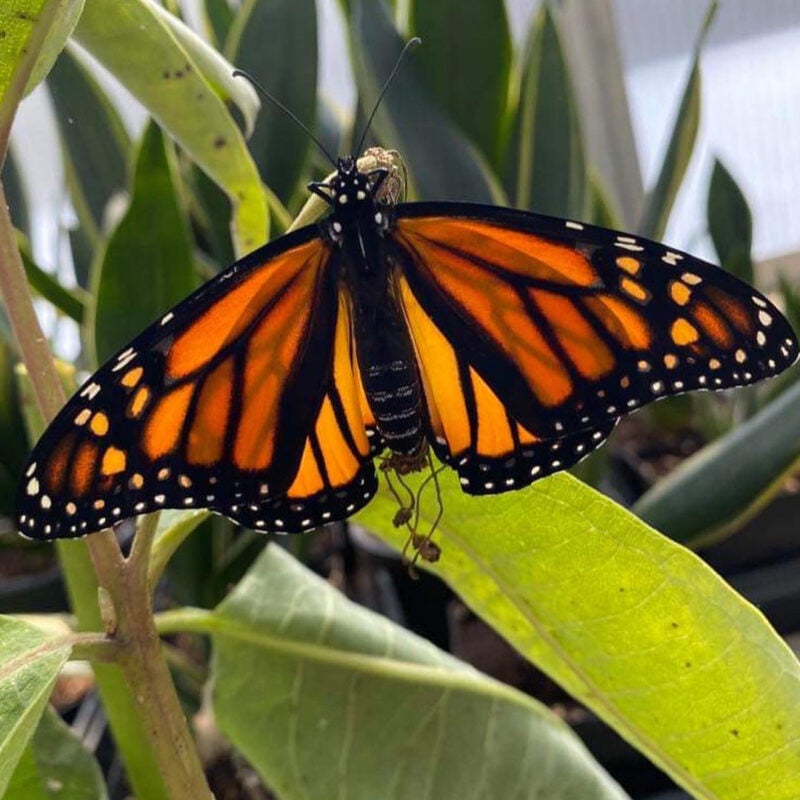
Monarch Waystation Garden
Established in Spring 2013, the Monarch Waystation Garden at Marshall University provides a vital habitat for monarch butterflies and other pollinators. Located at the northwest corner of Buskirk Hall, this garden was developed through a collaboration between Chuck Somerville, former Dean of the College of Science, and the Environmental & Safety Office, with plant care led by Angela Kargul and the NRRM program.
A Sanctuary for Monarchs
The garden supports every stage of the monarch butterfly’s life cycle, featuring plants grown from seeds donated by Monarch Watch. Monarchs rely on milkweed for egg-laying and caterpillar development, but habitat loss and pesticide use threaten their survival. The Monarch Waystation helps sustain these butterflies during their remarkable 3,000-mile migration to Mexico.
A Thriving Ecosystem
Beyond monarchs, this garden supports honeybees, hummingbirds, and other pollinators, as well as small wildlife like lizards and frogs. It serves as a peaceful campus retreat where students can observe nature up close. Learn how to create your own waystation at www.monarchwatch.org.
Garden Location
The Monarch Waystation Garden located at the northwest corner of Buskirk Hall
Native & Pollinator-Friendly Plants
Some of the key flowering plants include:
• Purple Coneflower (Echinacea purpurea)
• Scarlet Sage (Salvia coccinea)
• Tithonia Torch (Tithonia rotundifolia)
• Zinnia (Zinnia elegans)
• Dahlia (Dahlia spp.)
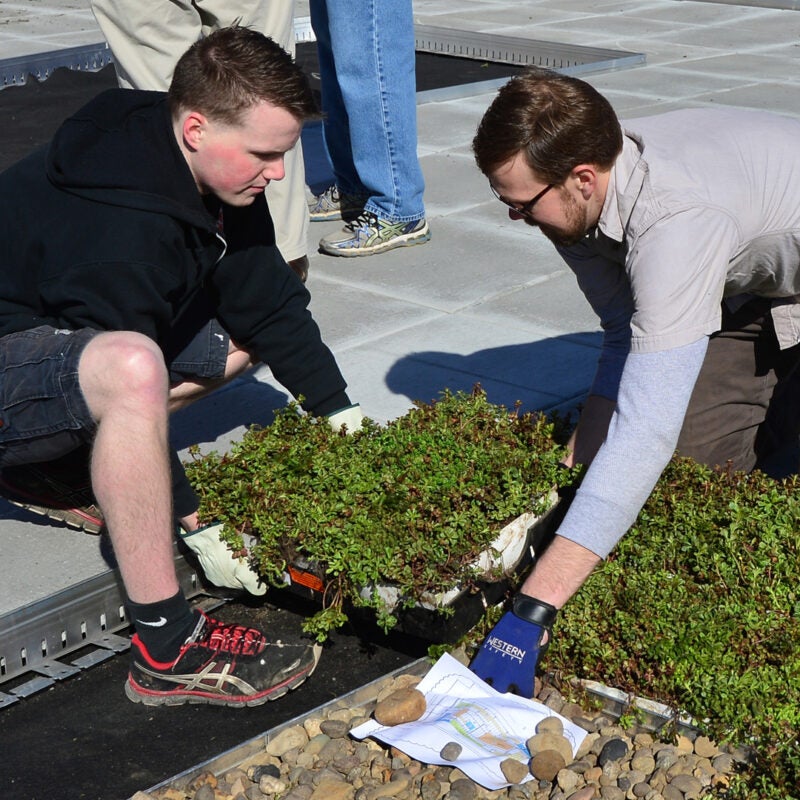
Marshall University Green Roofs
Green roofs provide numerous environmental and economic benefits, including:
- Extending Roof Lifespan – When properly installed, green roofs can last 40+ years, protecting the building structure.
- Improving Energy Efficiency – Enhanced insulation reduces heating and cooling costs.
- Managing Stormwater – Green roofs absorb 70–90% of rainfall, reducing runoff and preventing flooding.
- Filtering Air Pollutants – Plants naturally remove carbon and toxins from the air, improving air quality.
- Cooling Urban Environments – Unlike concrete or asphalt, green roofs absorb less heat, helping reduce local temperatures.
- Supporting Biodiversity – These rooftop ecosystems provide habitat for butterflies, birds, and pollinators.
Green Roof Locations
- Marshall University Science Building – Installed on September 3, 2013, the Green Roof Garden at Marshall University’s Science Building serves as an innovative project to explore the environmental benefits of rooftop gardens. Spearheaded by Chuck Somerville, former Dean of the College of Science, this initiative demonstrates how green roofs can enhance sustainability on campus.
- Marshall University Applied Engineering Complex – A second Green Roof Garden was later added in April 2015 to the LEED-certified Applied Engineering Complex, further expanding the university’s commitment to eco-friendly infrastructure.
A Step Toward Sustainable Cities
Green roofs not only benefit campuses but also contribute to cleaner, greener cities. They can even be used for urban agriculture, growing fresh produce like tomatoes, peppers, and beans to promote sustainability.
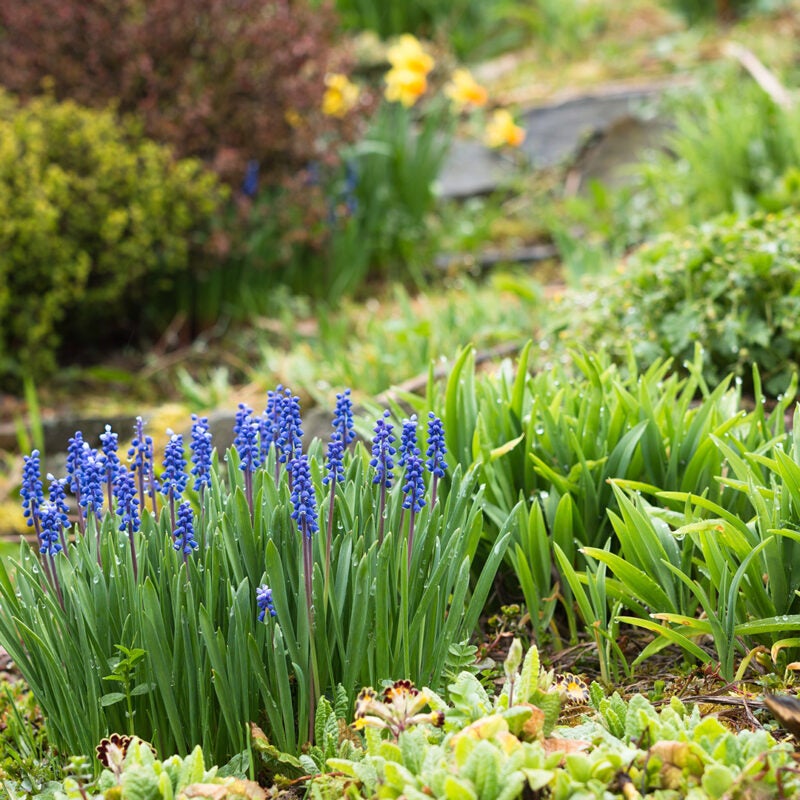
Rain Garden at the Child Development Academy
Marshall University’s first Rain Garden was installed in Spring 2013 behind the Marshall Child Development Academy. This project, overseen by Environmental Health & Safety with support from the West Virginia Conservation Agency, plays a crucial role in stormwater management and pollutant filtration on campus.
Why Rain Gardens Matter
Rain gardens help prevent flooding by absorbing and diverting excess rainwater from storm drains, streets, and driveways. Without proper management, stormwater runoff can carry pollutants such as oil, chemicals, and debris into local waterways, affecting water quality.
How Rain Gardens Work
A rain garden is a natural or man-made depression filled with native plants, shrubs, and trees designed to capture and filter stormwater before it reaches rivers, lakes, and ponds.
Rain gardens:
✔️ Reduce erosion and flooding
✔️ Improve groundwater recharge
✔️ Support local wildlife like birds and butterflies
✔️ Enhance campus landscapes with low-maintenance greenery
A Sustainable Solution
By allowing water to naturally soak into the ground, rain gardens improve water quality, protect local ecosystems, and provide a beautiful, functional addition to campus.
Get Involved
Students, faculty and community members are encouraged to take part in the Sustainability Gardens through volunteer programs, class projects or student-led initiatives. Whether you’re an experienced gardener or just getting started, there are plenty of ways to contribute.
For more information on how to get involved or support the Marshall University Sustainability Gardens, contact bemarshallgreen@marshall.edu.

